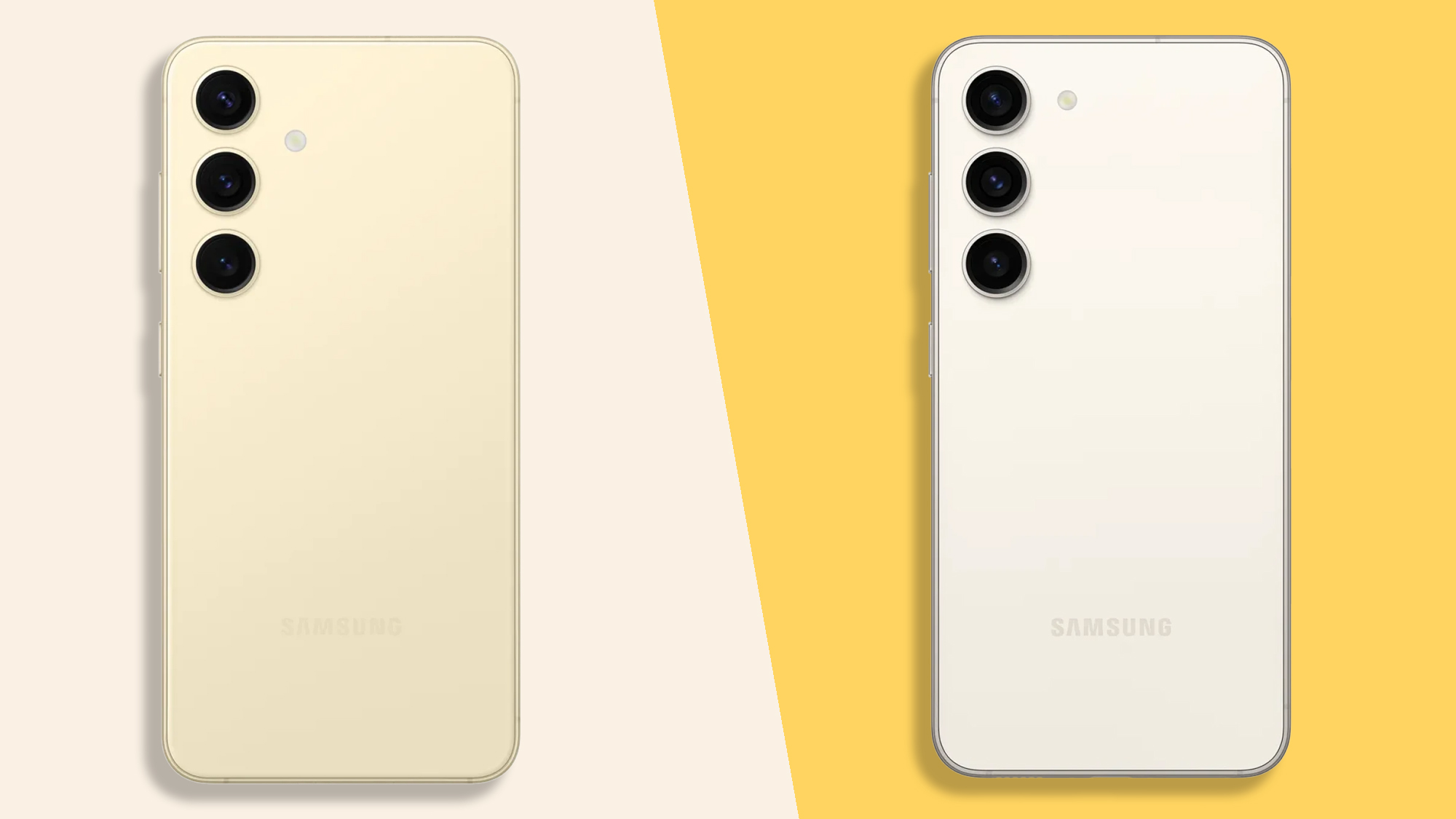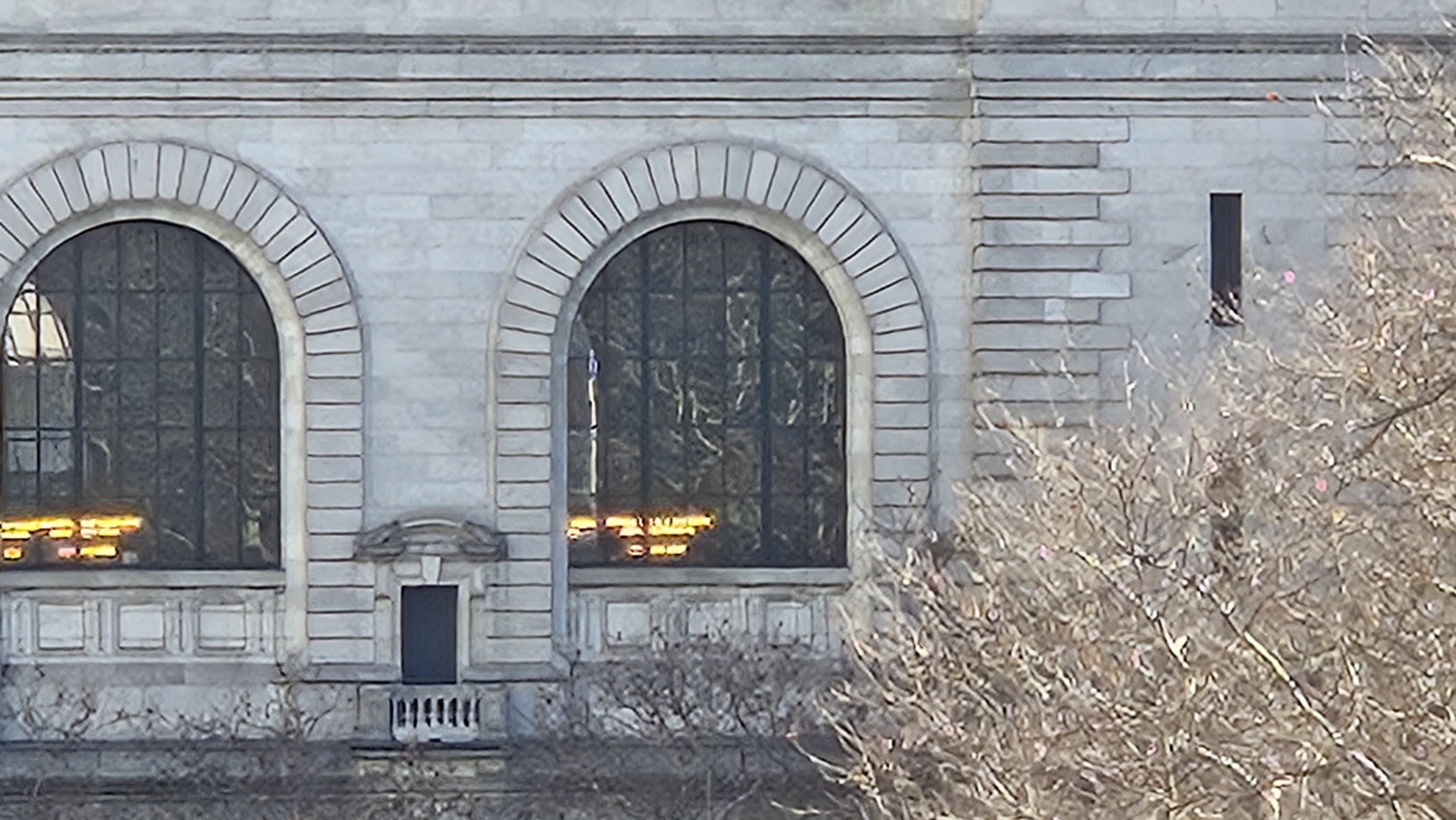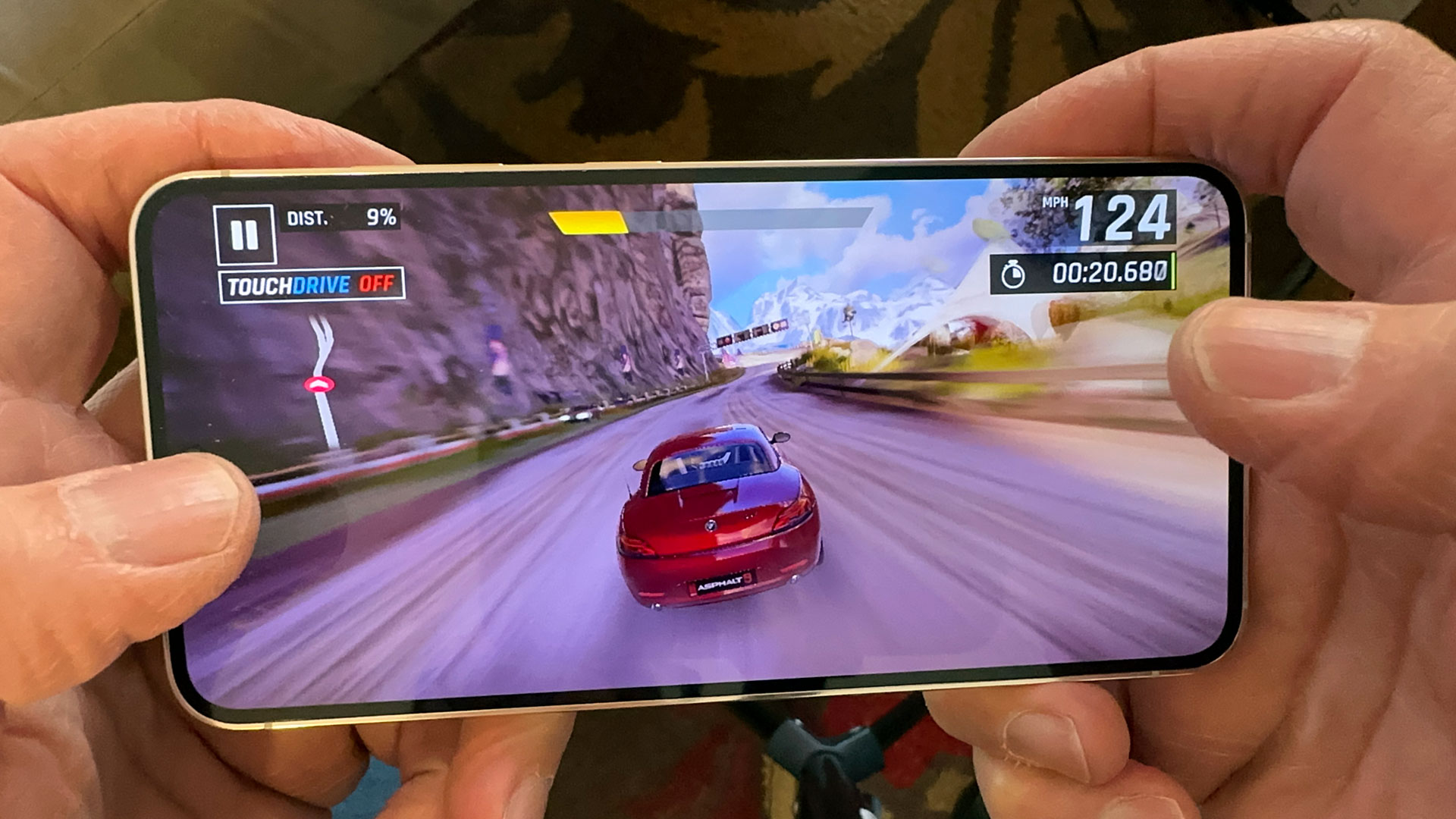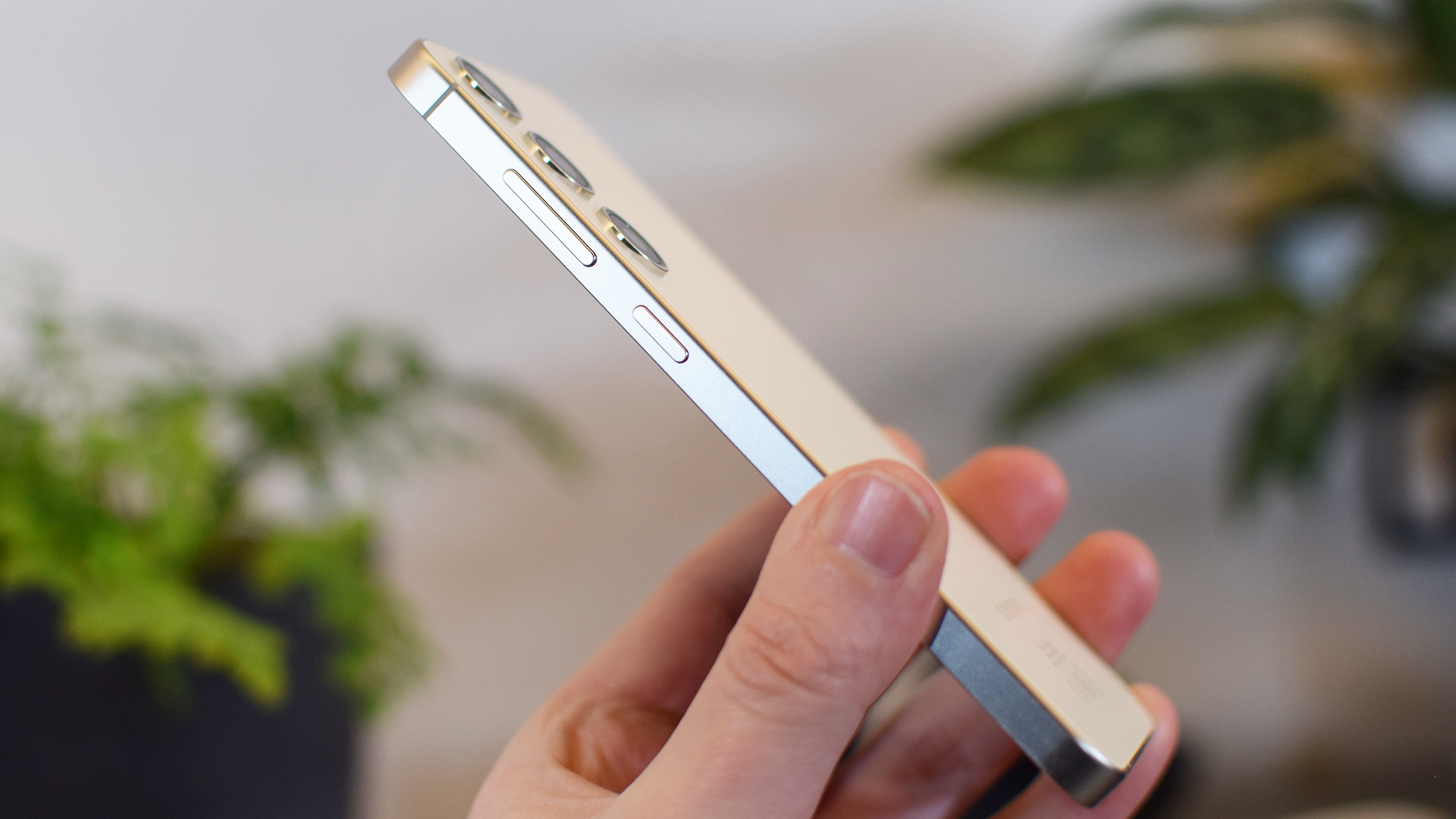
Weight: 167g
Dimensions: 147 x 70.6 x 7.6mm
Screen size: 6.2 inches
Resolution: 1080 x 2340
Chipset: Snapdragon 8 Gen 3 (US, Aus) / Exynos 2400 (UK)
Memory: 8GB RAM (LPDDR5X)
Storage: 128GB (UFS 3.1) / 256GB / 512GB (UFS 4.0)
Battery: 4,000mAh
Rear camera: 50MP+12MP+10MP
Front camera: 12MP
Galaxy AI features are no longer exclusive to the Galaxy S24, but the newer phone does still offer superior power and longevity over the Galaxy 23.
For
- Great screen
- Superb update commitment
- Compact powerhouse
Against
- Overstuffed user experience
- Galaxy AI features are no longer exclusive
- Minor upgrades over S23
Weight: 168g
Dimensions: 146.3 x 70.9 x 7.6mm
Screen size: 6.1 inches
Resolution: 1080 x 2340
Chipset: Qualcomm Snapdragon 8 Gen 2
Memory: 8GB (LPDDR5X)
Storage: 128GB (UFS 3.1) / 256GB (UFS 4.0)
Battery: 3,900mAh
Rear camera: 50MP+12MP+10MP
Front camera: 12MP
More compact than the S24, with better ergonomics to match, but the previous year's performance and a smaller battery might undermine its worth in the eyes of some.
For
- Even more compact than the S24
- Competent triple camera
- Good battery life for its size
Against
- Previous year's performance
- Smaller battery
- Fewer colorways
The standard Samsung Galaxy S24, of all the S24 series, probably received the fewest generational upgrades over its direct predecessor, making the question of whether an upgrade is worthwhile trickier to answer. The choice becomes more difficult still if you're torn between this latest Galaxy S and the previous year's baseline Galaxy S23, which has received over a year's worth of updates and price reductions, making it a contender.
Samsung's standard-variant flagships (not Plus or Ultra models) aim to offer compact performance in a market full of super-sized high-end phones. The baseline Galaxy S has delivered on this promise since the company split the line into multiple sizes, starting with 2016's Galaxy S7 and S7 Edge.
As with previous generations, beyond obvious differences such as a smaller screen dictating a smaller battery, non-Plus/Ultra Galaxy S phones usually adopt more modest networking, storage, and charging speeds – which is true here. But if you're staring at your S23 and wondering what, if anything, you're missing out on, or you want to point your wallet at one of these two capable Galaxy S phones, read on for an in-depth comparison.
For more detail on each, read our full Samsung Galaxy S24 review and Samsung Galaxy S23 review for added context.
Samsung Galaxy S24 vs Samsung Galaxy S23: price and availability

The Samsung Galaxy S24 launched in key markets on January 31, 2024, while the S23 first went on sale just shy of a year earlier, on February 17, 2023.
US pricing for both phones started at $799, while in the UK the S23 cost significantly more at £849 (equivalent to $1,090 in today's money), while Australian pricing placed the S24 at $1,399 and the S23 at AU$1,349.
Here's a full pricing table breakdown:
One caveat is that the base 128GB storage variants of both generations of Galaxy S phones run on older UFS 3.1-spec storage, so you get faster and more power-efficient UFS 4.0 storage for your money by opting for the higher-capacity models. This is a small difference in the grand scheme of things, but one worth highlighting.
There's also the obvious factor of price over time, with the Galaxy S23 now over a year old. At the time of writing, Samsung UK sells both storage capacities at £100 less than their original RRPs, while the 128GB model can be had brand new from the likes of Amazon for almost 40% off.
Samsung Galaxy S24 vs Samsung Galaxy S23: design and display

Just as Apple took the straight sides of the iPhone 14 (along with the 13 before it) and rounded them slightly for the iPhone 15 series, Samsung did something similar with the S24 but from the opposite direction.
Aesthetically, the switch to a matte finish from the polished and rounded edges of the S23 is great for reducing fingerprints but in a side-by-side comparison, the S23 offers better ergonomics. While this might be a poor trade-off for some, the S24 does sport a tougher Armor Aluminum frame, which its creator claims is 10% stronger than the S23's. You also get a choice of seven Samsung Galaxy S24 colors compared to the S23's six (this includes Samsung.com exclusives, in both cases).
Beyond the ergonomics and finishes of the frames, the designs of both Galaxy S phones remain largely consistent. The devices have a frosted glass rear with a triple vertically aligned "floating camera" setup and the same IP68-certified dust and water resistance. And while both remain capable, compact flagships, there's also the matter of display sizes to discuss.
The S23 is – by modern standards – a small phone with a 6.1-inch display, while the S24's screen is marginally bigger at 6.2 inches. The impact on overall size isn't really noticeable, and few other high-end phones approach either of the Galaxy S's pocketable proportions.
Screen tech also remains largely unchanged, with a Full HD+ resolution "Dynamic AMOLED 2x" panel and a peak 120Hz refresh rate. That said, although the S23's panel bottoms out at 10Hz, the S24's can reach as low as 1Hz, which makes it more power efficient. As for brightness, High Brightness mode on the S23 clocks in at 1,200 nits, while full-panel brightness tops out at 1,500 nits on the S24. Peak brightness jumps from 1,750 nits on the S23 to a whopping 2,600 nits on the S24, making the newer model's panel both more energy-efficient and easier to view, even in brighter outdoor conditions.
Samsung Galaxy S24 vs Samsung Galaxy S23: cameras

Even if you're familiar with the subtle differences between the S23's "floating camera" aesthetic and the S24's "One Mass" design language, there's little to tell the actual camera hardware on the back of each phone apart. We're not just talking form here; the sensors appear identical, too: a 50-megapixel f/1.8 main sensor, a 12-megapixel f/2.2 ultra-wide, a 10-megapixel f/2.4 3x optical zoom telephoto and a 12-megapixel front-facer; it's the same across both devices. So if the camera is your main reason to buy a phone, is there any added value to the Samsung Galaxy S24's camera?
Assuming you've seen any of the marketing surrounding the S24 series, it should come as no surprise that the main hook is the new AI functionality. The S24 launches with Galaxy AI features built in, including a suite of photography-centric abilities that, at launch, remain locked off to older models – including the S23.
Samsung Galaxy S23 camera samples:

















Various Samsung sources have confirmed that a handful of AI features will trickle down to the S23 series – including camera-related abilities like Photo Assist. However, at the time of writing, Samsung's older flagship is still to discover what that looks like when the company does push out the phone's One UI 6.1 update.
Even with AI features narrowing the gap between the S23 and S24, there's the inherent image processing each phone applies to pictures. The Galaxy S23 – like numerous previous generations – serves up higher contrast and heavily sharpened shots, which is characteristically Samsung.
Samsung Galaxy S24 camera samples:






The S24, however, takes a more metered approach with the same shots, delivering softer and more filmic imagery. The difference highlights how much variation Samsung can squeeze out of similar hardware, but the style bias will ultimately fall to personal preference.
Unlike last year, where every S23 ran on Snapdragon hardware, the global Snapdragon / Exynos chipset split in various markets worldwide for the Galaxy S24 introduces even more image variation in ISP (image signal processor). This variation will likely only matter to the most discerning Samsung Galaxy S users, though.
Samsung Galaxy S24 vs Samsung Galaxy S23: performance

That S24 chipset difference may have subtle implications when it comes to image processing, but the regional divide of Qualcomm Snapdragon 8 Gen 3-powered Galaxy S24s in markets including the US, versus Samsung Exynos 2400-powered phones across the UK and Europe, introduces discrepancies that make a direct comparison between with the S23's sole Snapdragon 8 Gen 2 chipset a little more convoluted.
If you're in the US, there are across-the-board gains to be had when moving from the S23's 8 Gen 2 to the S24's 8 Gen 3. The Exynos reportedly serves up weaker graphical performance but better power efficiency in some tasks compared to its Snapdragon counterpart. It outpaces the 8 Gen 2 in artificial tests, too, with a Geekbench 6 multicore score of 6,607 to the S23's score of 5,437.
Both phones start with a baseline 128GB of UFS 3.1 storage, which moves to faster and more power-efficient UFS 4.0 storage across 256GB and 512GB configurations. However, that top spec is inclusive to the S24 series and, more specifically, Australia (which also forgoes the lower 128GB model found in the US and UK).
Samsung Galaxy S24 vs Samsung Galaxy S23: software

On the software front, both phones serve up a similar-looking user experience in Samsung's own One UI interface, but the S24 obviously arrives on a release that's one year newer, running atop what is, at the time of writing, the latest major Android release: Android 14.
What really sets the S23 and S24 apart here is the newer Galaxy S's outstanding update promise: it trounces the S23's already-impressive four years of operating system and five years of security updates, with the promise of a whopping seven generations of both. From a value standpoint, your money pays for a lot more support with the S24 than it does with its predecessor.
That said, you won't lose out on Samsung's suite of Galaxy AI features (Circle to Search, Live Translate, Interpreter, Chat Assist, and so on) by choosing the Galaxy S23 over the Galaxy S24.
At the launch of the latter phone, these features were reserved for Samsung's latest Galaxy line, but they're now available on a wide range of Samsung phones, right the way down to the Samsung Galaxy S21. For a full breakdown of which phones have which features, check out our Galaxy AI compatibility explainer.
Samsung Galaxy S24 vs Samsung Galaxy S23: battery life

A larger screen and body afford the newer Galaxy S24 a larger battery, but only by a little. The Galaxy S23 arrived with a 3,900mAh cell inside, while the S24 hosts an even 4,000mAh power pack.
In practice, both phones muster similar screen-on time results, with the S23 usually skirting just under and the S24 just over seven hours per charge, with the always-on display enabled in both cases.
Charging is uniform across both models, too, at 25W wired and up to 15W wireless. In testing, the S23 reached 53% in 30 minutes and a full charge in 1 hour 20 minutes, while the S24 hit 58% charge after half an hour with a compatible Samsung charger (sold separately in the case of both phones) and 100% at the same time as the S23.
Samsung Galaxy S24 vs Samsung Galaxy S23: verdict

There's really very little that sets the S24 apart from its predecessor, with both models presenting a similar design, user experience, camera and battery. There are obvious areas in which the newer model stands apart, namely with its newer generation chipset and significantly longer-lasting software promise, but beyond those factors, the differences fall to taste rather than prowess.
Perhaps you prefer the sound of the S23's fractionally smaller proportions and more comfortable ergonomics, or are tempted by the S24's slightly more powerful chipset.
If it comes down to money, the Galaxy S23 has had a lot of time to drop in price, making for a noteworthy steal in early 2024. However, you get more for the S24's higher asking price – not just because of the performance headroom as a result of that newer silicon, but because of that upgraded update promise, too. You're getting a great compact flagship either way, but for different reasons.
You might also like
- The best Samsung phone deals right now
- Samsung Galaxy S24 vs iPhone 15: the key differences
- The best Samsung phones: top Galaxy handsets ranked







